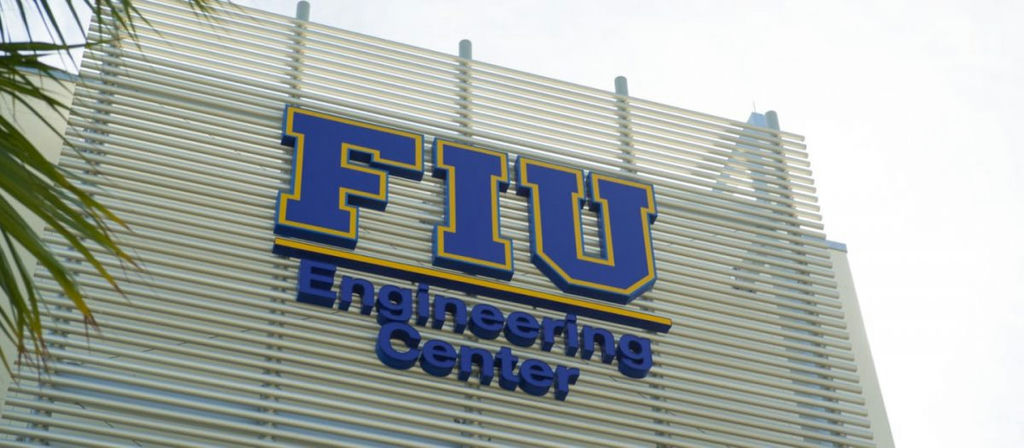FIU has received a $3.2 million grant from the Army Corps of Engineers to research the 3D printing of Ultra-High Performance Concrete (UHPC). The innovative research looks to help military personnel and industry professionals create extra-strong, customized structures on demand.
More from the News
UHPC is stronger and more durable than traditional concrete. The material is projected to become very important to the construction industry in the coming years, said Atorod Azizinamini, director of the Moss School of Construction, Infrastructure and Sustainability in the FIU College of Engineering & Computing.
“Just a shell of UHPC wrapped around a structure adds to its total strength,” said Azizinamini, principal investigator of the grant. “The properties of UHPC allow us to make structures smaller and more lightweight. This translates to energy savings and smaller carbon footprints.”
Another major benefit of UHPC is that it is difficult for water to penetrate. This is important because if a substance like saltwater breaches through a building’s concrete and reaches its reinforcing steel, it can cause corrosion.
“The idea of having really high-quality concrete is that you increase the time it takes for chloride in water to penetrate the concrete and reach the steel,” said Kingsley Lau, an associate professor in the Department of Civil and Environmental Engineering and co-principal investigator of the grant.
By 3D printing UHPC, someone can theoretically create custom, elaborate construction pieces simply by sending a file to a machine. For example, military personnel in the field could print support beams for bridges, and a construction worker in a remote area could print a reinforcement piece for a building. All that would be needed is the UHPC material, a printer and a design. It would be a logistics breakthrough. The challenge with printing UHPC is that each layer begins to solidify as it is laid down, similar to how a sidewalk is gelatinous before it hardens. As layers of concrete are stacked in a printed design, inconsistencies can form at the seams.
FIU’s research will concentrate on determining what exact chemical compositions of UHPC best prevent these vulnerable seams from forming. The professors will come up with recommendations for three types of 3D printing: printing layers, spraying layers and a new extrusion type of printing that FIU is patenting. Having a specific “ingredient list” for UHPC also will help with the fact that concrete is often locally sourced and its chemical composition can change from place to place. The grant was secured with the support of members of Congress.
“This is an important investment by the Army Corps towards Florida International University, which will help maintain our defense readiness while further advancing innovation and creating jobs for our workforce in Florida,” said U.S. Rep. Mario Diaz-Balart, ranking member of the Transportation, Housing and Urban Development appropriations subcommittee of the U.S. House of Representatives.
The research comes at a time when UHPC is becoming more affordable and practical to use. Azizinamini estimates that a cubic yard of the material is selling at less than 10 percent of the price of when it was first commercially released. Building design specifications around UPHC also are being developed. FIU’s research looks to unlock a new wave of advancements around this emerging construction material.
“I am so proud to support the innovative solutions that FIU is developing, which will help ensure our coastal installations are more resilient,” said U.S. Rep. Debbie Wasserman Schultz, chairwoman of the Military Construction and Veterans Affairs subcommittee of the House Appropriations Committee.
Subscribe to AM Chronicle Newsletter to stay connected: https://bit.ly/3fBZ1mP
Follow us on LinkedIn: https://bit.ly/3IjhrFq
Visit for more interesting content on additive manufacturing: https://amchronicle.com


